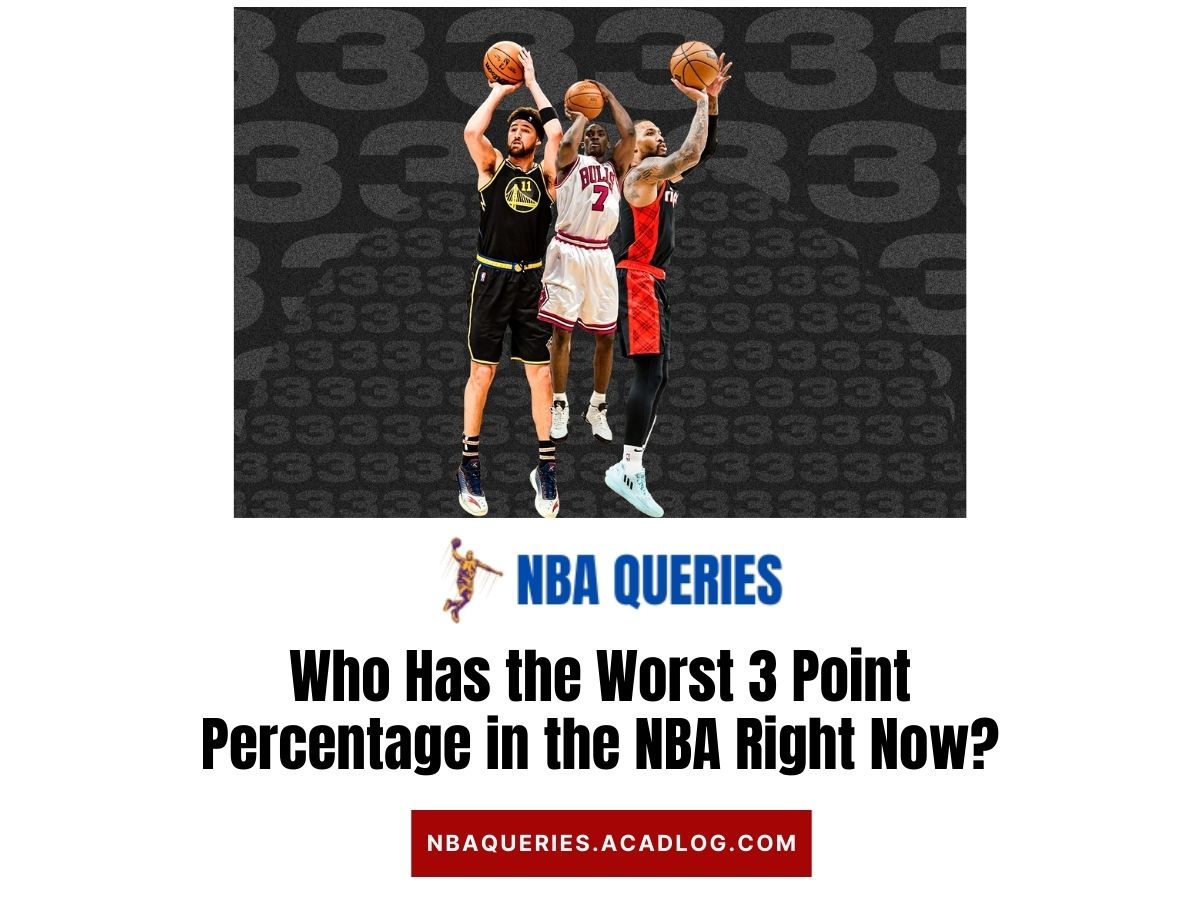In the fast-paced world of professional basketball, the three-point shot has become a pivotal part of the game. Teams and players alike rely on their accuracy from beyond the arc to secure victories. But not everyone can be a sharpshooter. In this article, we delve into the statistics to identify the players with the worst three-point percentages in the NBA right now.
The Strugglers: Who’s Missing the Mark?
1. Ausar Thompson
- Three-Point Percentage: 15.0%
- Team: Undisclosed
- Season: 2023-2024
Ausar Thompson finds himself at the bottom of the three-point shooting leaderboard. His 15.0% accuracy from downtown is a far cry from the league average. Whether it’s nerves, mechanics, or simply an off-season, Thompson’s struggles are evident.
2. Sekou Doumbouya
- Three-Point Percentage: 22.6%
- Team: Detroit Pistons
- Season: 2020-2021
Doumbouya’s 22.6% shooting from beyond the arc last season left much to be desired. Despite his athleticism and potential, he couldn’t find his rhythm from long range. The Pistons hoped for improvement, but consistency eluded him.
3. Jimmy Butler
- Three-Point Percentage: 24.5%
- Team: Miami Heat
- Season: 2020-2021
Jimmy Butler, a multifaceted star, struggled with his three-point shot. His 24.5% accuracy was uncharacteristic for a player of his caliber. The Heat needed more from their leader, especially in clutch moments.
4. Caleb Martin
- Three-Point Percentage: 24.8%
- Team: Charlotte Hornets
- Season: 2020-2021
Martin’s 24.8% shooting was a disappointment for the Hornets. As a role player, he needed to capitalize on open looks. Unfortunately, inconsistency plagued his performance.
5. James Johnson
- Three-Point Percentage: 25.8%
- Team: Various (played for multiple teams)
- Season: 2020-2021
James Johnson’s journeyman status didn’t help his three-point woes. His 25.8% accuracy reflected his struggles across different teams. Whether it was nerves or form, Johnson couldn’t find his groove.
Read:
- How Far is a NBA 3 Point Line? The Complete Details
- 70 Point Games in NBA History: The Complete Details
- NBA Record for 3s in a Game: The Complete Detail
The Bigger Picture: Team Rankings
While individual players grapple with their shooting woes, let’s zoom out and look at team performance. In the 2022-2023 season, the Chicago Bulls sank the fewest threes as a team, with a total of 854 three-pointers made. Their collective struggles highlight the importance of consistent shooting in today’s NBA.
1. The Three-Point Revolution
The NBA has undergone a significant transformation in recent years. The three-point shot, once considered a novelty, is now a fundamental part of offensive strategies. Teams that can consistently knock down threes have a competitive edge. But what happens when a team’s shooters misfire?
2. The Domino Effect
a. Spacing and Floor Balance
- Successful three-point shooting creates spacing on the court. Defenders must respect shooters beyond the arc, which opens up driving lanes and passing angles.
- When a team struggles with three-point accuracy, defenders sag off, clogging the paint. This disrupts offensive flow and limits options.
b. Offensive Efficiency
- Teams with poor three-point percentages often rely heavily on mid-range shots or drives to the basket.
- While these shots can be effective, they don’t yield as many points per possession as threes. Over the course of a game, this inefficiency adds up.
c. Defensive Rebounding
- Missed threes lead to long rebounds. If a team can’t secure those boards, opponents get second-chance opportunities.
- Rebounding becomes a critical aspect of overcoming poor shooting. Teams must crash the glass to limit opponents’ extra possessions.
3. Case Study: The Chicago Bulls
The Chicago Bulls, despite their rich history, struggled with three-point shooting in the 2022-2023 season. Let’s break down their challenges:
a. Lack of Threat Beyond the Arc
- The Bulls made only 854 three-pointers, ranking last in the league.
- Their opponents exploited this weakness by packing the paint and daring them to shoot from deep.
b. Offensive Predictability
- When a team lacks reliable three-point threats, defenses can predict their moves.
- The Bulls often faced double-teams on star players, stifling their offense.
c. Defensive Vulnerability
- Poor three-point shooting affects defense too. Long rebounds lead to fast breaks for opponents.
- The Bulls struggled to transition from offense to defense, conceding easy points.
4. Strategies for Improvement
a. Player Development
- Coaches must work with struggling shooters to refine their mechanics.
- Repetition, film study, and confidence-building drills can boost percentages.
b. Shot Selection
- Teams should emphasize high-percentage shots. Encourage players to take open threes rather than contested mid-range shots.
- Analyzing shot charts helps identify sweet spots.
c. Roster Adjustments
- General managers may need to acquire reliable shooters via trades or free agency.
- A single sharpshooter can transform a team’s offensive dynamics.

